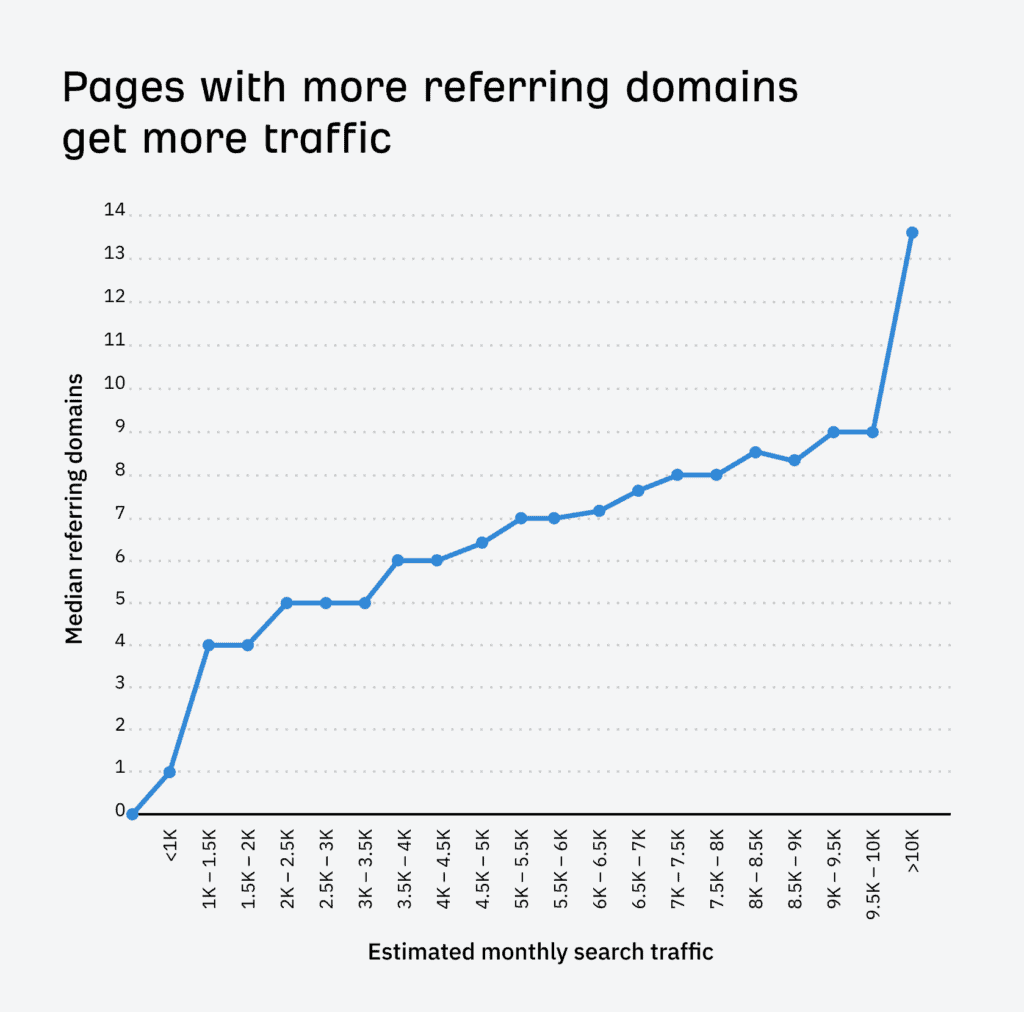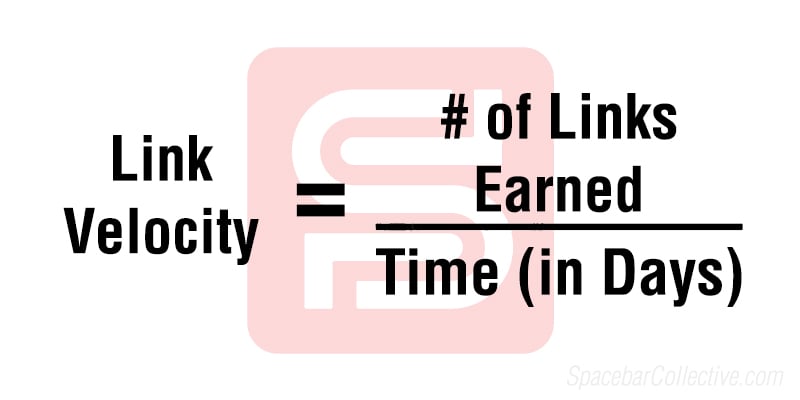How to Increase Link Velocity
As an online business, few things are more essential to your success than links. Every link to your website can help you grow in visibility, authority, and relevance: the building blocks of success. Backlink building is a cornerstone of any successful SEO campaign, but especially when working in competitive markets like SaaS SEO.
A study by Ahrefs shows that the number of backlinks is directly proportional to the organic traffic a website receives. But how do you jump-start that process? One effective strategy is to focus on increasing your link velocity: the speed at which you actively build links to and from your website, content, and other resources.

Here, we’ll explore the concept of link velocity: what it is and how you can use it to drive growth quickly, so you can make the most of your link-building efforts and accelerate conversions.
What Is Link Velocity?

Link velocity is the rate at which a website or page earns backlinks, whether organically or from backlink building efforts.
Link velocity measures how quickly you can build up the number of external websites linking back to yours and, therefore, how much link popularity your site can gain over time.
Why Does Link Velocity Matter?
Link velocity, or the rate at which new links are acquired, is an important measure of a website’s authority and trustworthiness. Search engines use link velocity to determine how valuable and authoritative a website is, as websites with more incoming links from other sites typically have higher authority.
High link velocity can also help increase your visibility in search engines, leading to higher rankings and more traffic. Link velocity also improves your online reputation, as websites that gain links quickly appear more reliable and trustworthy to potential visitors.
How to Build Links to Increase Link Velocity
Here’s how you can build quality links resulting in increased link velocity.
Update Your Content
Links are earned when you produce interesting, engaging, and shareable content that gives readers something to discuss.
When it comes time to update your content, check your existing material. What topics have already been covered? Is the content still relevant? If not, it’s time to give your material a fresh perspective.
If you are at a loss for ideas, consider what topics are trending in your industry. Social media is a great source of inspiration—keep an eye out for conversations and frequently discussed topics.
You can also curate content from other sources and create your unique spin on it. Take snippets from different articles, combine them with your insights, and use them as the jumping-off point for a new blog post.
Create Visual Assets
Visuals are faster and more effective in communicating than words as it is easier to understand and more appealing. For example, if you’re creating a blog about social media statistics, consider making an infographic to accompany it. Infographics help summarize complex information in an easy-to-understand format and can be shared across multiple platforms.
When other websites use your visuals to support their content, they are bound to add a link to your website to abide by copyright rules. This will help you build effective links and increase link velocity.
Broken Link Building
Broken links can be a great way to increase your link velocity. When you come across a broken link on a particular website, take the opportunity to contact the site owner and pitch them on why they should replace it with a link to your website.
This is effective because it puts you in control of what kind of content gets linked back to you, plus it’s a great way to build relationships and get valuable backlinks. Just make sure that the content you’re offering is relevant, helpful, and of high quality — this will ensure that your link will be seen as an asset rather than just another entry in an ever-growing list of outbound links.
Guest Posting
Guest posting is one of the best ways to increase link velocity. It involves writing and placing an article about your topic on another website in exchange for a backlink. This allows you to reach new audiences, generate more awareness for your brand, drive traffic to your site and even rank higher in search engine results pages.
Depending on the website or publication you’re targeting, you may need to work with an editor or provide additional information like images or videos. When done correctly, guest posting is a win-win for both you and the host site, providing valuable content and a link to your website.
Find Your Competitors’ Healthy Backlinks
Another way to improve link velocity is by finding your competitors’ links and then obtaining those links for yourself. This is a great way to beat the competition and improve your rankings.
Using tools such as Ahrefs or Majestic SEO, you can easily review your competitors’ backlink profiles to see what websites are linking to them.
Once you have identified a few potential link sources, build relationships with them. Reach out to them via email or social media, introduce yourself and your company, and explain why you believe their website could benefit from linking to your own.
Final Thoughts
Link velocity is important for SEO, so ensure you build healthy links from quality sources. While obtaining backlinks can be time-consuming, it’s well worth the effort in the long run. Try these different strategies and see which works best for your website:
- Update content with a fresh perspective to increase backlinking opportunities.
- Utilize visuals such as infographics to accompany blog posts and acquire backlinks to your website when someone uses your visuals.
- Contact website owners with broken links to suggest replacing them with a link back to your website.
- Take advantage of guest posting to reach new audiences and drive traffic.
- Research your competitor’s backlink profile for link opportunities.
- Reach out to potential link sources and explain why their website could benefit from linking to yours.
If you’re looking to ramp up your link velocity and want to do it safely, contact us today for a free consultation.







